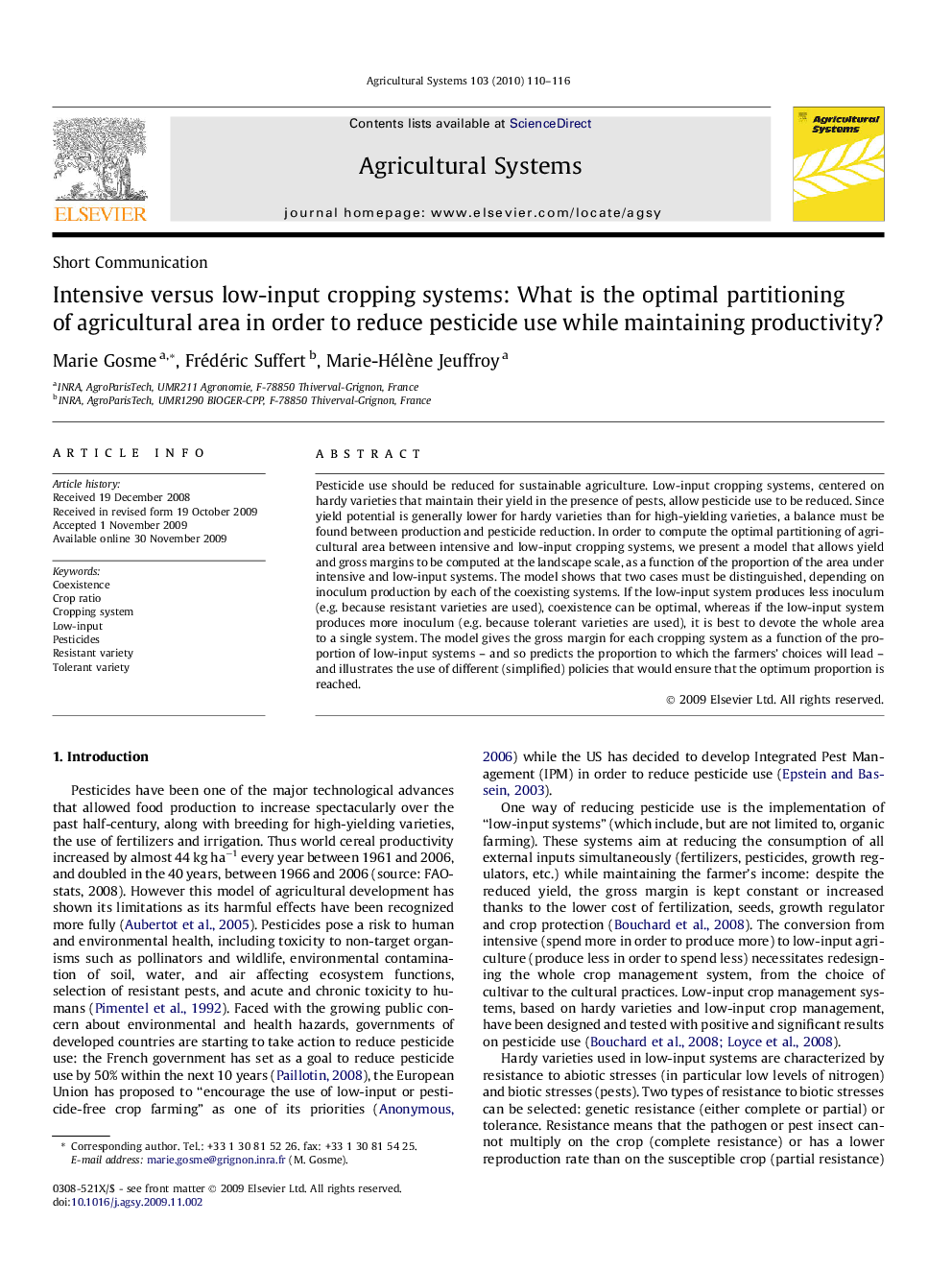| Article ID | Journal | Published Year | Pages | File Type |
|---|---|---|---|---|
| 4491608 | Agricultural Systems | 2010 | 7 Pages |
Pesticide use should be reduced for sustainable agriculture. Low-input cropping systems, centered on hardy varieties that maintain their yield in the presence of pests, allow pesticide use to be reduced. Since yield potential is generally lower for hardy varieties than for high-yielding varieties, a balance must be found between production and pesticide reduction. In order to compute the optimal partitioning of agricultural area between intensive and low-input cropping systems, we present a model that allows yield and gross margins to be computed at the landscape scale, as a function of the proportion of the area under intensive and low-input systems. The model shows that two cases must be distinguished, depending on inoculum production by each of the coexisting systems. If the low-input system produces less inoculum (e.g. because resistant varieties are used), coexistence can be optimal, whereas if the low-input system produces more inoculum (e.g. because tolerant varieties are used), it is best to devote the whole area to a single system. The model gives the gross margin for each cropping system as a function of the proportion of low-input systems – and so predicts the proportion to which the farmers’ choices will lead – and illustrates the use of different (simplified) policies that would ensure that the optimum proportion is reached.
